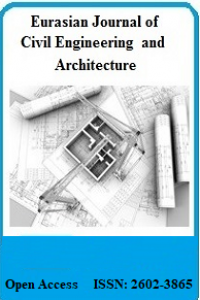Reducing Sediment Deposition in a Clarification Tank Using Numerical Modeling
Reducing Sediment Deposition in a Clarification Tank Using Numerical Modeling
This study aims to resolve a hydraulic engineering problem using Computational Fluid
Dynamics (CFD) method. The problem is related to a sedimentation basin in a water
treatment plant of ESKI (Eskisehir Water and Sewerage Administration) which is one of the
municipal facilities in Turkey. Accumulation of sediment in distribution channels for the
clarification tanks were reported to be generating operation-wise problems. The plant is
entirely gravity driven and the flow conditions at various channels are difficult to control. The
manual cleaning process of deposited sediment is required periodically during operation due
to accumulated sediment in the distribution channels. This work puts an effort for detecting
the problem and stopping the sediment deposition purely by simple geometrical improvement
using numerical modeling. In this study, the main goal is to offer a reasonable solution based
on basic hydraulic principles.
Sediment accumulation (as a result of deposition) is characterized by low stream velocity and
also low turbulence kinetic energy. Based on the most recent suspended sediment theory, the
developed local flow conditions under which the suspended particles start gravitating was
identified and used as a criterion for controlling the flow conditions. The objective then was
to hydraulically redesign the feeding channels for the clarification tank in an effort to increase
the stream velocity and stop the early occurring sediment deposition. Low-velocity flow
regions (at the downstream of the channel) were identified using CFD method. Also, initial
conditions (water height) were identified and the CFD model was validated by a 1:10 scale
physical model of the clarification tank. Consequently, by altering the geometry of the
channel, these low power regions were activated in terms of suspension of sediment using
contractions in the channel. The results are believed to be leading a low cost but effective
solution to the problem which eliminates manual intervention during the treatment plant’s
operation
___
- Bardina, J.E., Huang P.G., Coakley T.J. 1997. Turbulence Modeling Validation, Testing, And Development, NASA Technical Memorandum 110446.
- Bayazit M., Avci I. 2010. Akarsularda Akım ve Sediment Taşınımı (River Flow and Sediment Transportation), Birsen, Istanbul, Turkey.
